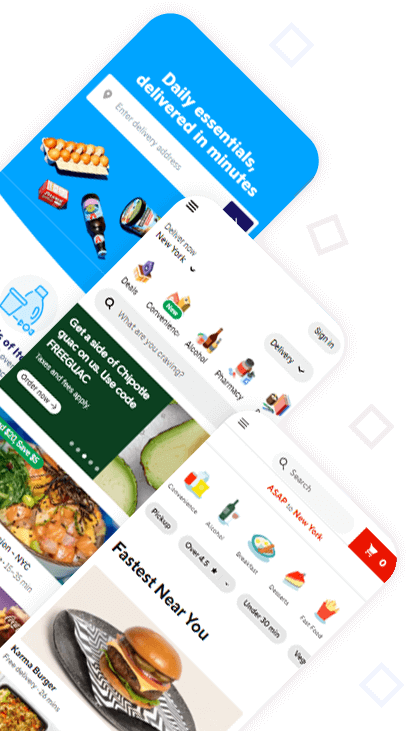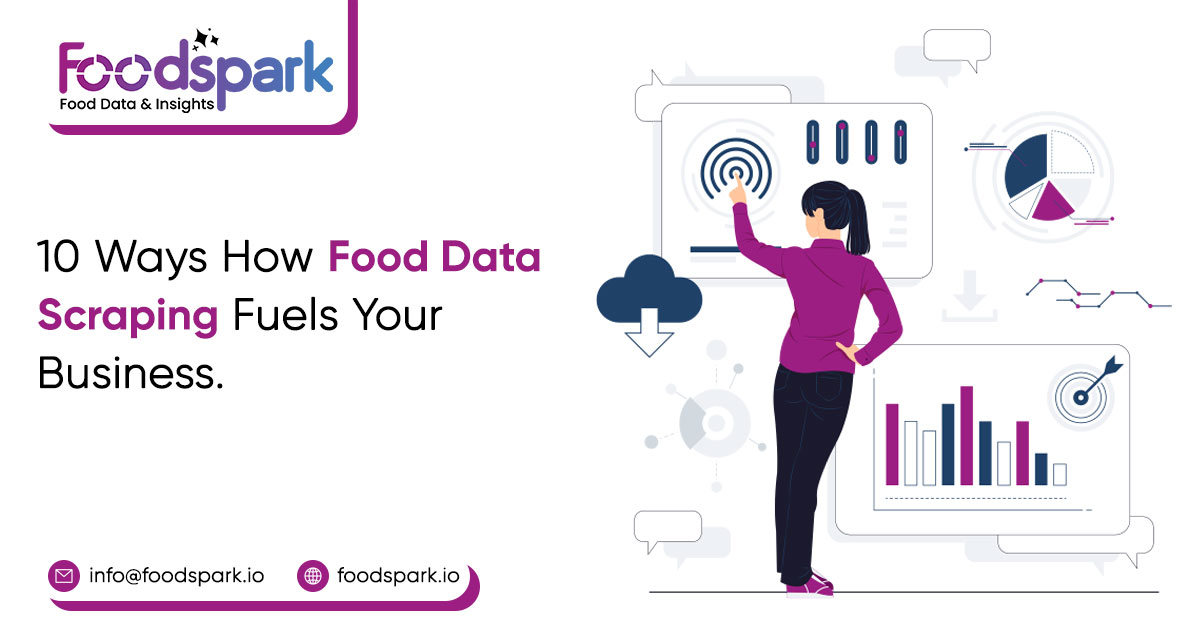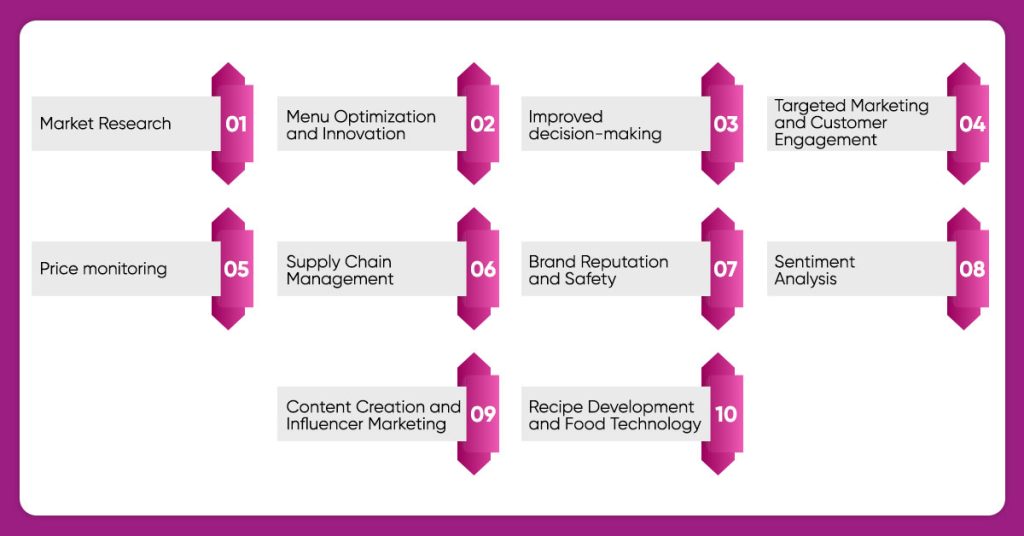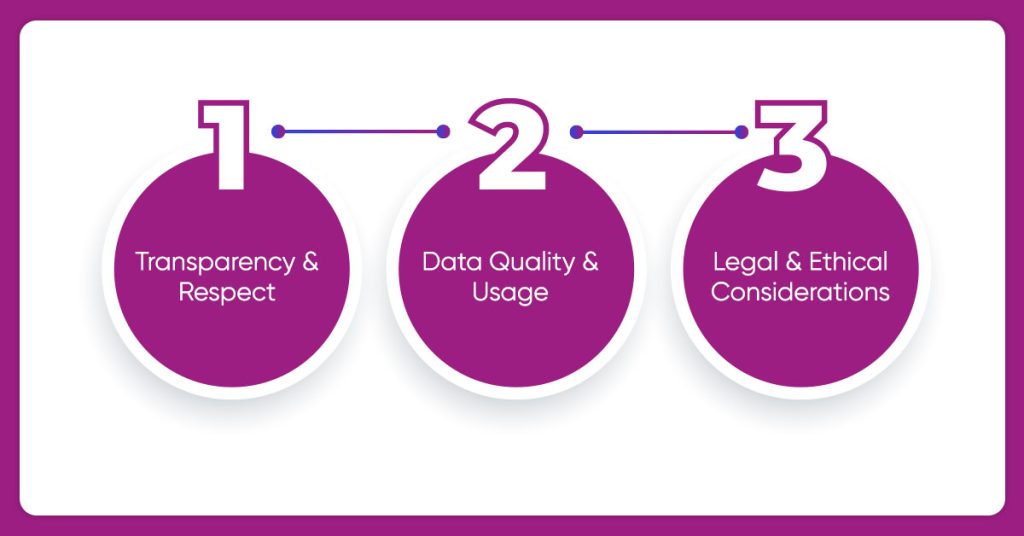Let's talk!
We'de love to hear what you are working on. Drop us a note here and we'll get back to you within 24 hours.

We'de love to hear what you are working on. Drop us a note here and we'll get back to you within 24 hours.

In the food game, data is the secret ingredient. But where do you find this data? It’s food scraping! This tool extracts information from online sources such as food apps, chat forums, social media, and other websites. The data helps you understand the latest food trends, set the right prices, discover upcoming trends, and improve your menu and marketing strategies. Popular food delivery apps and well-known food brands have millions of active users who can help your business grow. Our list of 10 strategies for using food data scraping can help your business go from average to top-rated quickly. Let’s get started!

The food industry has opportunities, making it an exciting space for businesses. Companies can get ahead in this competitive field by using data effectively. Here are 10 ways to use data to boost your business.
Researching the market and identifying trends may be accomplished with great advantage when your company uses food data scraping solutions. This info helps you understand what foods and ingredients are popular now, what your customers like, and what your rivals are doing. These tools collect information from different places, like comments on social media, restaurant reviews, ratings on food delivery apps, and even pictures. They also help you spot parts of your business that could do better and keep up with new food trends.
Collecting food data helps make new and exciting dishes. It allows you to observe what types of cuisine customers prefer, for example, vegan or gluten-free, so that you can adjust your menu accordingly. You can find out what meals or ingredients people love and improve or remove the ones they don’t. You can try out new dishes and food ideas based on what customers say and what is trending. This lowers the chance of a flop and increases the chance of a big success. Including promotional materials like a well-designed flyer can also attract attention to specific dishes or offers. For example, using a creative design for a burger, restaurant, or pizza flyer can effectively showcase your new recipes and promotions.
Real-time data from restaurant menu data mining is key to a treasure of data that helps in precise decision-making. This data provides insights into market trends, demographics, and unique food choices to competitors’ prices, which empowers businesses to make strategic choices by analyzing order and delivery times, wait periods, staffing, traffic patterns, and food waste to optimize resource allocation, reduce costs, and improve customer experience. By benchmarking performance against competitors, you can enhance operational efficiency in terms of delivery time and online presence.
In today’s competitive world, understanding your customers is beyond innovation. The data extracted from food data scraping provides deeper insights from online sources and aids in focused marketing campaigns and customer engagement. Analyzing online reviews, social media mentions, and location-specific trends allows the design of personalized marketing campaigns. The marketing campaign analytics identify potential gaps in your offerings and your marketing approaches, which helps differentiate your brand and attract customers with unique value propositions.
Food Price Data Scraping is a real game changer when it comes to providing real-time actionable insights and optimizing your pricing strategies. Analyse and identify pricing opportunities and adjust your own menu and pricing. Track competitors’ menu changes, daily offers, special discounts, and promotional offerings across your direct and indirect competitors. Always stay relevant to your customers by aligning your prices with the current trends, specific ingredients, and dishes. Offer loyalty programs, rewards, and limited-time deals that might help you gain a competitive edge.
Your business could face trouble if there’s a change in the price of raw materials, suppliers don’t deliver when needed, or you run out of necessary ingredients. This data keeps tabs on the current prices of important ingredients from several suppliers so that you can get the best deals and avoid sudden cost spikes. Information about suppliers can help you find new sellers, nearby farms, and other places to get ingredients, which can increase your connections and promote new partnerships. Plus, this data can help you get ready for any challenges by watching for changes in the weather, news about farming, or food safety issues.
Food data scraping helps you watch, improve, and care for your brand image. Details, reviews, and feedback from many places, like comments on social media, delivery services, review websites, and other sites, give you an understanding of how customers see your brand, the quality of your food, and your service.
Understanding customer sentiments is more than a necessity. Food data scraping is one such powerful tool that helps you analyze online reviews, customer feedback, social media comments, and other mentions. Monitoring customer sentiments towards competitors’ strengths & weaknesses and areas of improvement that can differentiate your offerings to attract customers. Positive, negative, and neutral sentiments can be leveraged to create a message that best resonates with the target audience.
In today’s world, digital space is filled with noise, and it takes more than just chefs to make a food business successful. It is all about data, strategies, and content that make your food stand out in the market. It is crucial to craft content like emerging food trends, trending ingredients, culinary techniques, dietary needs, and meal suggestions to engage the target audience. Identify food bloggers who are doing well in their region and collaborate to ensure a strategic match. Use various analytical tools to track the performance of your influencer marketing campaigns on social media.
Being innovative and creative isn’t just for technology; in the always-changing food world, it’s important to come up with new recipes using fresh ingredients. By analyzing what people talk about your food online, reading restaurant reviews, and visiting local food spots, businesses can use local food info to create new dishes that mix regional recipes, food from different continents, and surprising combinations that can change the industry. Making creative dishes helps connect better with customers and local sellers and also encourages people to eat healthy, seasonal foods. Cloud kitchens, personalized meals, and great customer experiences help the food industry grow and advance toward innovation.

Food data scraping is unarguably a powerful tool for businesses, but it is important to be ethical and responsible while putting this data to use. Here are some of the best practices while using food data exraction.
Securely store and manage the scraped data, implementing appropriate measures to prevent unauthorized access or misuse.
Food Data Scraping is a fantastic way to boost your business. From keeping an eye on what other businesses are doing to staying updated with the latest food trends and improving your brand based on what your customers are saying, food scraping tools have everything you need. With some creativity, this data can help you come up with new exciting meals, make better connections for your customers, and even encourage healthier eating habits. The food world always keeps changing, and using a menu scraping service will help you stay ahead of the curve. But where do you get this data? FoodSpark is a leading platform that helps your businesses with food data & insights. We specialize in delivering accurate, real-time data solutions for the various food industries to offer endless possibilities.